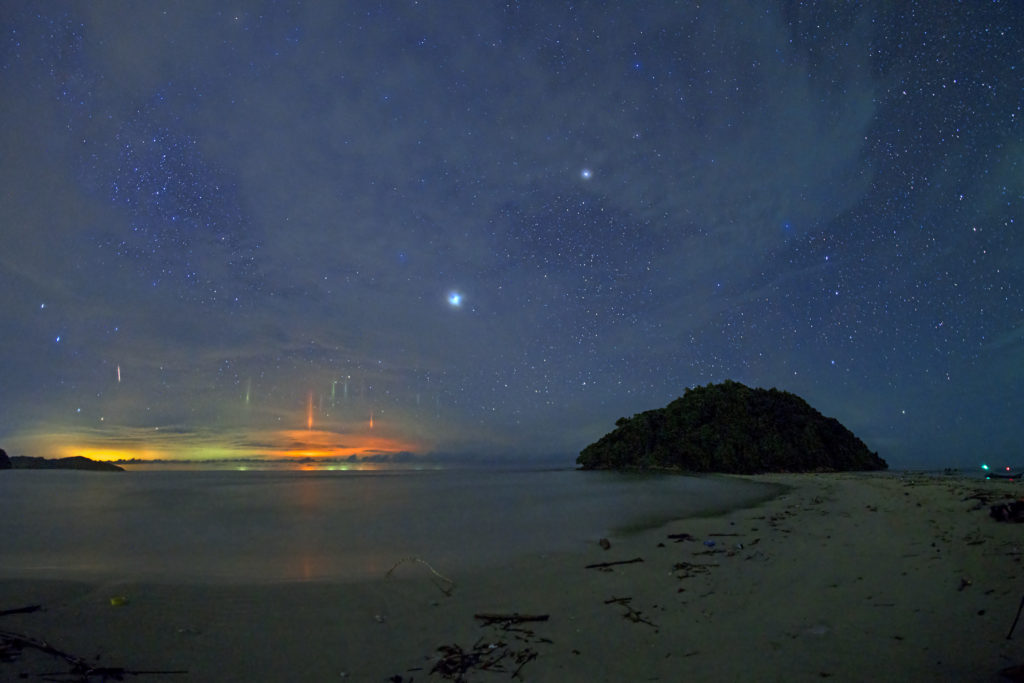
Light pillars at Kelambu Beach. Image: Andrew JK Tan/Flickr
Singaporean photographer Andre JK Tan and a group of his peers were treated to a rare sight when they traveled to Kudat Sabah, Malaysia.
Tan and his fellow photographers began to see what he believed to be light pillars near Kelambu beach, in Borneo, at around 9 p.m. The light show went on for several hours and finally faded at around 1 a.m., Thursday, reports The Star Online.
“Shooting the night sky at Pantai Kelambu, Kudat, Sabah. However it was so cloudy that the milkyway quality was not that good even though I did capture some,” he said as he posted the sighting on Facebook via the fan page Mentorgraphy. “But I did capture this NEW phenomenon which I think are LIGHT PILLARS which is an atmospheric phenomenon in the band of vertical lights which appeared above lights sources.”
Light pillars are formed when light reflects on ice crystals floating in the air. The light seen by onlookers are typically pillar-shaped and have the same color as the source.
According to historical weather data on Accuweather, temperatures in Kudat Sabah peaked at 30 degrees and cooled at 24 degrees Celsius on average for the month of June. Though still rare, light pillars are more often seen in far cooler climates like in Canada or the arctic regions. This makes the appearance of light pillars in a generally tropical part of the world even more rare. Alfred Bayle/JB
Image: Accuweather